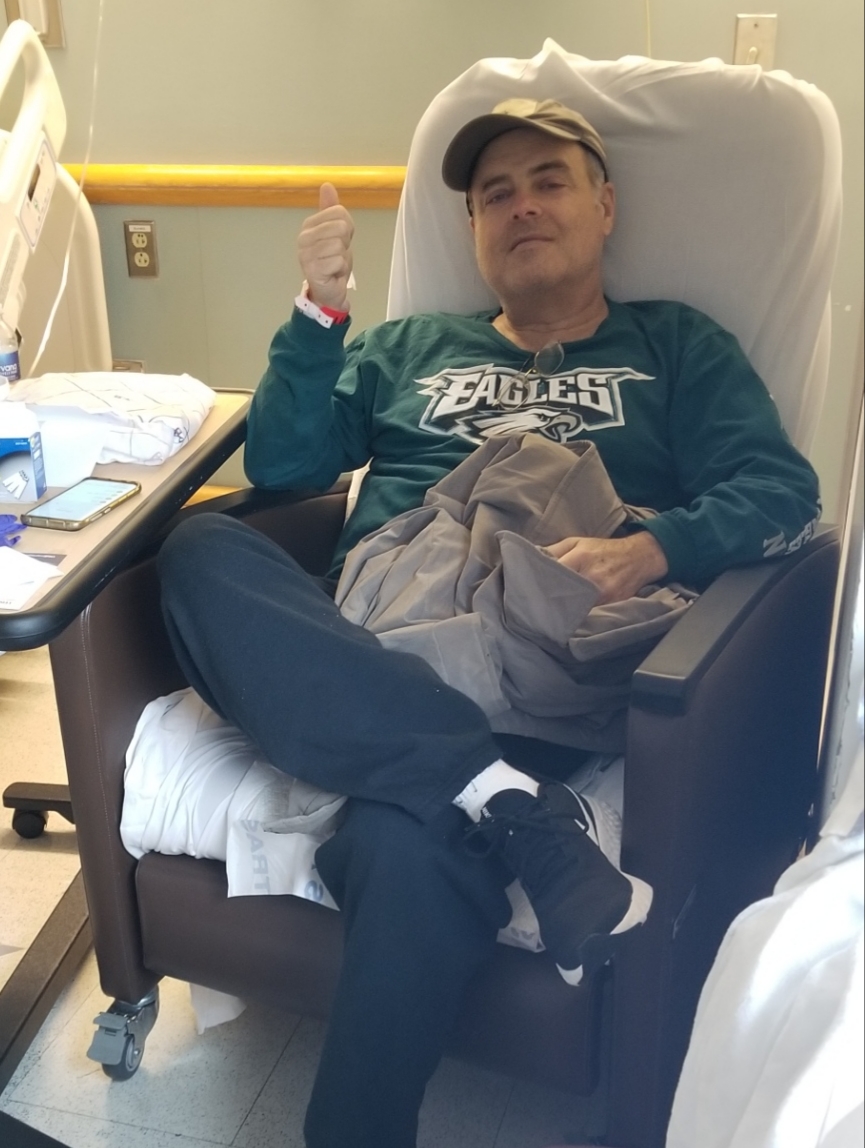For years, Ed Silberman lived a relatively normal life during the day. But every night, the 63-year-old financial adviser from Cherry Hill, New Jersey, went through two rounds of peritoneal dialysis, which uses the abdominal lining to filter blood inside the body. At his age, a normal kidney functions at 85% or higher. By fall 2019, Silberman’s kidneys were functioning at 7%.
As one of 100,000 people waiting for a kidney transplant, his best hope was to match with a living donor. So Silberman’s family, including son-in-law Jeremy Garson, JD’14, launched a social media campaign to find a stranger to save Silberman’s life.
“I went kind of nuts,” Garson says. “I contacted everyone I could think of, including the entire cast of ‘Stranger Things.’” (That seemingly random connection came through his undergraduate theater teacher.)

Garson’s tweet was amplified by sportswriter Ace Anbender, ’10, who’d been on the receiving end of the U-M community’s generosity a few years ago when he had to step away from own his job due to health issues.
“Michigan grads are a remarkably generous and fortunate group,” Anbender says. “I retweeted Jeremy’s plea for help because I had faith in the Michigan community to come through.”
It worked. The aptly named Dave Heal, JD’10, a software salesperson from Denver, began the process of testing to determine whether he was a match. Heal had previously considered donating his kidney in 2018 when a friend of a friend was looking for a donor. That person ended up matching with someone else. But, having already assessed the risks and begun the process, when Heal learned Silberman needed a kidney, he figured, why not?
“I saw that tweet a few months after I’d already gone through these mental exercises to determine that it felt like something I could do,” Heal says. “It felt like the universe was talking to me.”
Garson and Heal connected via Twitter direct messages, but Garson was hesitant to get Silberman’s hopes up before a match was confirmed. In January 2020, the Penn Transplant Institute in Philadelphia notified Silberman that he matched with a living donor and, following the successful completion of testing, the donor would be flown to Penn for the surgery to be scheduled later that year. COVID-19 abruptly canceled those plans. Due to privacy laws, Penn couldn’t reveal the name of the donor, but Garson told Silberman it was Heal. Heal learned he could still donate from Colorado. Silberman and Garson hoped he would.
- 100,000: Number of people on the kidney transplant waitlist
- 3.6 years: Median wait time for an individual’s first kidney transplant
- 13: Number of people who die each day waiting for a kidney
- 18,000: Number of kidneys transplanted each year
- 6,000: Number of living kidney donors each year
- 15-20: Average number of years a kidney from a living donor lasts
- Source: National Kidney Foundation, kidney.org
“The donor coordination team kept reminding me that I could back out at any moment,” Heal says. “I wasn’t sure how much to share with Jeremy, because I had a lot of information they did not have about how the testing was going and how far along I was in the process. When they hadn’t heard from Penn for a while, Jeremy would reach out to me directly to check in. I could tell they were stressed. It felt like it was up to me or back to square zero.”
Heal pressed on with the testing. However, in yet another twist of fate, his final chest X-ray revealed a lesion on his lung. There was a good chance it was benign, and in normal circumstances his physician would just monitor the nodule’s growth. But if he wanted to donate a kidney, Heal would need to undergo a biopsy to rule out cancer. The idea of enduring an uncomfortable elective procedure during the pandemic was daunting. But the stress of a possible cancer diagnosis was unbearable. Heal had the biopsy. It was negative. In October 2020, Penn notified Silberman that the transplant surgery was scheduled for Dec. 18.
“It’s an unbelievable gesture to do this for someone you don’t know,” Silberman says. “Just after I arrived at Penn for my surgery, Jeremy sent me a picture of Dave in his recovery room giving a thumbs up after his surgery. That was the first time I ever saw him. It was very emotional.”
Almost three years after he joined the waiting list, Silberman got his kidney. He hopes to meet Heal in person one day. The stranger who saved his life now feels like part of the family, thanks to the son-in-law who made the U-M connection.
“I’d love to buy him a drink,” Garson says.
Kat Braz is a former magazine editor turned freelance writer based in the Midwest.





